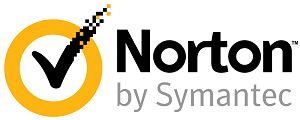Norton Cyber Security Insights Report Reveals Parents’ Concerns About Cyberbullying and the Online World to Coincide with the Back to School Period
 To coincide with the start of the 2017 school year, Norton by Symantec has released findings from the Norton Cyber Security Insights Report: Family Edition. The report encourages parents to openly discuss cyberbullying with their children and sheds light on parents’ perceptions of cyberbullying and the preventative measures they are putting in place to protect their children.
To coincide with the start of the 2017 school year, Norton by Symantec has released findings from the Norton Cyber Security Insights Report: Family Edition. The report encourages parents to openly discuss cyberbullying with their children and sheds light on parents’ perceptions of cyberbullying and the preventative measures they are putting in place to protect their children.
The report reveals that while 64 percent of Australian parents allowed their children to access the Internet before age 11, many had a wide range of concerns. For example, more than half (54 percent) of Australian parents believe their children are more likely to be bullied online than on a playground.
“Children today face threats beyond physical violence or face-to-face encounters,” said Gavin Lowth, Vice President, Consumer Business Unit, Asia Pacific and Japan, Symantec. “Cyberbullying is a growing issue and parents are struggling to identify and respond to this threat. A concern for many parents is that cyberbullying doesn’t stop when their child leaves school – as long as your child is connected to a device, a bully can connect to them.”
In addition to cyberbullying, parents’ chief concerns were that their children might:
- Download malicious programs or a virus (60 percent)
- Disclose too much personal information to strangers (58 percent)
- Be lured into meeting a stranger in the physical world (50 percent)
- Do something online that makes the whole family vulnerable (48 percent), embarrassed (42 percent) or haunts them in the future with job or university prospects (49 percent)
Parents Beginning to Step Up Family Cyber Security
The Norton Cyber Security Insights Report: Family Edition shows that Australian parents are starting to recognise how damaging cyberbullying can be for children and are putting in place preventative measures. For example,
- 38 percent parents chose to check their child’s browser history
- 36 percent only allow access to certain websites
- 35 percent allow Internet access only with parental supervision; 37 percent review and approve all apps before they are downloaded
- 37 percent enable Internet access only in household common areas
- 31 percent limit information they post about their children on social profiles and 26 percent set parental controls through home routers
One interesting finding from the survey is that parents from countries, who had the strictest preventative measures in place, also had the lowest incidence of cyberbullying. The survey also reveals that more than one in 10 (16 percent) of Australian parents fail to take any action to protect their children online.
“Many parents are still in the dark about how to recognise the signs of cyberbullying and what to do if their children are impacted. The first steps for all parents is to educate themselves about the signs of cyberbullying and learn how to establish an open line of communication with their children,” added Lowth.
Starting a Conversation
The Norton Cyber Security Insights Report indicates that only 10 percent of Australian parents reported their child was cyberbullied. While on the surface this may seem like cyberbullying is not a problem, the reality is that many parents don’t know how to recognise the signs of cyberbullying, so the problem is likely under-reported. Additionally, many children choose to remain silent about cyberbullying due to a fear of losing access to devices and the Internet, or that parents will embarrass them or exacerbate the problem by contacting the bully’s parents or the school.
If you suspect or are worried about cyberbullying, the first step is communication. Cyberbullying is a sensitive subject, and starting a conversation can be difficult.
Signs of Cyberbullying
Some of the signs that indicate a child is being cyberbullied include:
- They appear nervous when receiving a text/online message or email
- Habits with devices change. They may begin avoiding their devices or using them excessively
- They make excuses to avoid going to school
- They become defensive or secretive about online activity
- They withdraw from friends and family
- They have physical symptoms such as trouble sleeping, stomach aches, headaches, and weight loss or gain
- They begin falling behind in school or acting out
- Their grades start declining
- They appear especially angry, frustrated or sad, particularly after going online/checking devices
- They delete social media or email accounts
To learn more about cyberbullying signs and tips to start an open conversation that is easier for both parents and children, visit http://norton.com/cyberbullying.
About the Norton Cyber Security Insights Report
The Norton Cyber Security Insights Report is an online survey of 20,907 device users ages 18+ across 21 markets, commissioned by Norton by Symantec and produced by research firm Edelman Intelligence. The margin of error for the total sample is +/-0.68%. The A.U parenting sample reflects input from 1,005 device users ages 18+, 340 of whom are parents. The margin of error is +/- 3.1% for the total A.U. sample, +/-5.3% among Australian parents. Data was collected Sept. 14 – Oct. 4, 2016 by Edelman Intelligence.
About Symantec
Symantec Corporation, the world’s leading cyber security company, helps organizations, governments and people secure their most important data wherever it lives. Organisations across the world look to Symantec for strategic, integrated solutions to defend against sophisticated attacks across endpoints, cloud and infrastructure. Likewise, a global community of more than 50 million people and families rely on Symantec’s Norton suite of products for protection at home and across all of their devices. Symantec operates one of the world’s largest civilian cyber intelligence networks, allowing it to see and protect against the most advanced threats. For additional information, please visit www.symantec.com or connect with us on Facebook, Twitter, and LinkedIn.





